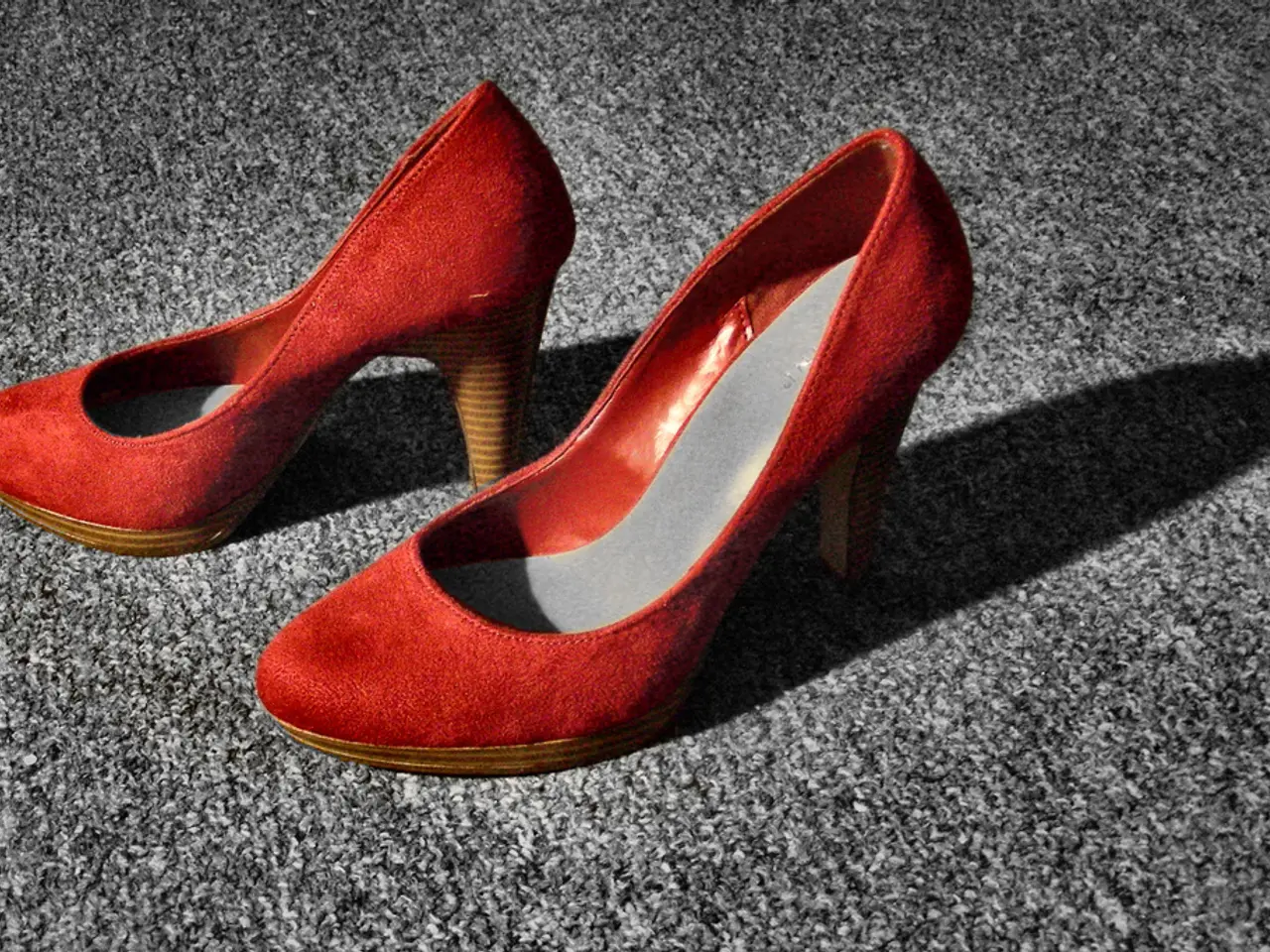Strategies for Correcting Misaligned Toes
In the world of foot health, toe deformities like Hallux Valgus, Schneider Bunion, Hammer Toe, and Claw Toe are common issues that can cause discomfort and affect daily life. Dr. Thomas Schneider, an orthopedist from the Gundelfingen joint clinic, has shed light on these conditions and their causes, types, and treatments.
Causes of Toe Deformities
Toe deformities can be the result of various factors. Improper footwear, such as shoes that are too tight or too short, can increase pressure on toes, leading to deformities like hammer toe and bunions (Hallux Valgus) [1][4]. Anatomical factors, such as bone structure issues, having a long second toe, or instability in toe joints, can also precipitate deformities [1].
Medical conditions, like rheumatoid arthritis and other inflammatory joint diseases, cause joint destruction, leading to bunions, claw toes, and instability [2]. Diabetes with peripheral neuropathy and neuromuscular diseases also increase the risk [1][5]. Trauma, such as prior toe injuries like sprains or fractures, can also lead to abnormal positioning [1].
Types of Toe Deformities
One of the most common deformities is Hallux Valgus, also known as a bunion. In this condition, the big toe deviates towards the smaller toes, causing a bony prominence. Schneider Bunion is a type of bunion occurring on the fifth (smallest) toe side, causing outward deviation of the little toe.
Hammer Toe is a deformity where the toe is bent downward at the middle joint (PIP joint), often caused by muscle imbalance or footwear pressure [1]. Claw Toe is a condition where toes bend up at the joint where they attach to the foot and down at the middle and end joints, creating a claw-like shape [2][3].
Treatments for Toe Deformities
Treatment for toe deformities can range from conservative measures to surgery, depending on the severity and symptoms. Non-surgical treatments include properly fitting shoes with a wider toe box, orthotic devices, splints, or pads to cushion and realign toes [2][4]. Stretching and physical therapy can also improve flexibility and muscle balance [2][5].
For more advanced or painful deformities, surgery may be necessary. Procedures like arthroplasty, tendon transfer or tenotomy, fusion, and bunion corrections may be used to correct the deformity and alleviate pain [1][2][3].
Prevention and Care
Prevention is key when it comes to toe deformities. Wearing shoes that give the toes room to move but still provide support is a good start for foot care [4]. Taking a few minutes each day to stretch the toes and rotate the feet can help keep the feet mobile and well-circulated [5]. If there are any nasty pressure points on the toes or they hurt overall, it's a good time to have a doctor check for crooked and misaligned toes.
In summary, toe deformities can be influenced by mechanical factors like footwear and anatomical predispositions, with medical disorders also playing a role. Treatments range from conservative measures (stretching, orthotics, footwear modification) to surgery depending on severity and symptoms. With proper care and prevention, the discomfort and inconvenience caused by toe deformities can be minimized.
[1] Schneider, T. (2020). Hallux Valgus and Hammer Toe: Diagnosis and Treatment. Springer. [2] American Orthopaedic Foot & Ankle Society. (2019). Bunions. Retrieved from https://www.aofas.org/footcaremd/conditions/bunions/ [3] American College of Foot and Ankle Surgeons. (2021). Hallux Rigidus. Retrieved from https://www.acfas.org/heelpain/conditions/hallux-rigidus.aspx [4] American Podiatric Medical Association. (2020). Footwear and Your Feet. Retrieved from https://www.apma.org/Learn/FootHealth.cfm?ID=212 [5] American Diabetes Association. (2019). Foot Care. Retrieved from https://www.diabetes.org/healthy-living/care-for-diabetes/foot-care/foot-care-basics
- In the realm of science, medical professionals continue to study the causes and treatments of various chronic diseases, such as cancer, respiratory conditions, and digestive health issues, in addition to focusing on eye health, hearing, and skin care.
- Workplace wellness programs often address mental health, emphasizing its importance alongside physical fitness and exercise for overall health and wellness.
- Autoimmune disorders, like rheumatoid arthritis, can impact cardiovascular health by causing joint destruction and potentially leading to toe deformities.
- Therapies and treatments for neurological disorders, such as cbd-based oils, are explored in the field of medicine to help alleviate symptoms and improve overall health.
- Management of medical conditions like diabetes is crucial, as it not only affects cardiovascular health but also increases the risk of toe deformities due to peripheral neuropathy.
- While exploring the world of skin care, one may come across various skin conditions, from common issues like acne to autoimmune-related disorders causing inflammation and changes in skin texture.
- It's essential to maintain a balanced diet rich in nutrition to ensure optimal health and fighting off infections, as well as addressing certain medical conditions like digestive health issues or autoimmune disorders.
- In addition to genetic factors, factors like prolonged stress or mental health struggles can contribute to the onset or worsening of autoimmune disorders and neurological conditions.
- For individuals seeking to improve their fitness and exercise routine, they should also pay attention to their toenails, as neglected nail care can give rise to various skin conditions like fungal infections.
- Routine check-ups with healthcare providers provide an opportunity to detect potential health concerns or conditions early, including those related to mental health, skin care, and respective therapies and treatments.




